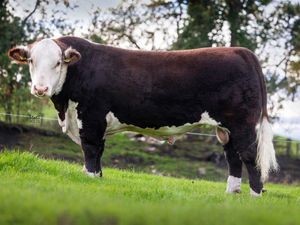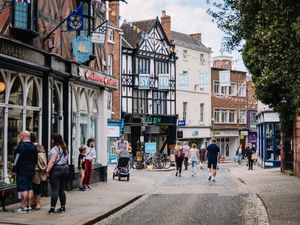Church spotlight: Claverley hub is treasure trove of medieval artwork
To people who live in Claverley, it is the local village church, a focus of community activities, and venue of the popular flower show.
But to hundreds of visitors who travel from all over the world every year, it is a treasure trove of some of the finest medieval artwork in the country – if not the world.
"The Americans love it because it is steeped in history," says the Rev Garry Ward, who took over as vicar four years ago.
"We also get a lot of visitors from Canada, Australia, and New Zealand.
"I think there are a lot of people in those countries have links to Claverley, they have family who lived here years and years ago, and they want to see their family history."
Garry, who is 47, had served at Holy Trinity Church in Wordsley, near Dudley, before moving to All Saints.

"It is very different, there are 2,500 people in this parish, compared to 27,000 in Wordsley," he says.
And Garry says he loves the rural setting and close-knit community of his present parish.
"I like being in the country, I like the people, they are very friendly, and I love the way of life, it's very relaxing.
"I love the positive attitude of the people, I like the community spirit.
"Everybody is there for everybody else, you know if somebody is ill because the whole village helps out."
Garry, who worked as a midwife at Walsall Manor Hospital before deciding on a career change in 2001, says people in the village are fiercely proud of the church and its history.
"Parts of it date back to 672, and most of it is Norman, and we have a yew tree outside that is 2,500 years old, that has been verified," he says.
The paintings, which date back to 1220, have been judged to be among the best medieval artistry in Britain by inspectors from London's Courtauld Institute of Art.
The spectacular wall paintings features warring knights mounted on brightly coloured horses on the north side of the nave.

"It is supposed to represent the conflict between the seven virtues and the seven vices," says Garry.
"The gold horses represent the virtues, and the red ones represent the vices."
The painting, which is based on the poem Psychomania by 4th century writer Prudentius, was covered beneath coats of white paint until the mid 20th century.
"It was all whitewashed over during the Renaissance," says Garry.
"They wanted nothing to do with the medieval art. It was not discovered until 1902, when some work was being done to remove some of the fixtures from the church. Some of the paint was found to be flaking off in the corner, and they discovered all this underneath."
The work to restore the painting by removing the coats of paint which had been applied over the centuries did not take place until around the 1950s though.
Close observers will notice that there are only six red horses and six gold ones. So what happened to the seventh vice and virtue? It is again a result of the Renaissance alterations.
"It is believed that it would have gone further back, but part of it was lost when they put a new wall in during the 1400s," he says.
It is the condition of the paintings, no doubt helped by the protection offered by half a millennium's worth of whitewash, which makes the painting so unique.
"You see a lot of medieval paintings, but they are usually in pretty poor condition. Here the colours are so bright and vibrant."
The church's medieval art, which also includes cross-hatching on the church's pillars, is renowned throughout Britain, and is listed in the Journal of Antiquities.
"It is comparable with the medieval art you will see in France," he says.
"It is of international significance."

The present church was commissioned by Roger De Montgomery, the 1st Earl of Shrewsbury, in 1071.
Garry says: "He was a friend of William the Conqueror who gifted the church and the land after the Norman invasion."
The distinctive cross hatching, which dates from the time the church was built, also owes a lot to De Montgomery.
"People would show their wealth by building in small stones," he says.
"This was built with large stones. The cross-hatching was to make Roger seem more wealthy than he was."
Other important features in the church include Queen Elizabeth I's coat of arms painted on the wall – denoting Bridgnorth's former status as a Royal Peculiar.
There are a number of impressive memorials, including a slab marking the death of merchant Richard Spycer in 1488, and the splendid tomb of Sir Robert Broke, a former Speaker of the House of Commons, and his two wives.
Garry says the church also has a strong bell-ringing tradition, and recently launched a successful drive to attract more members to its bell ringing team.





